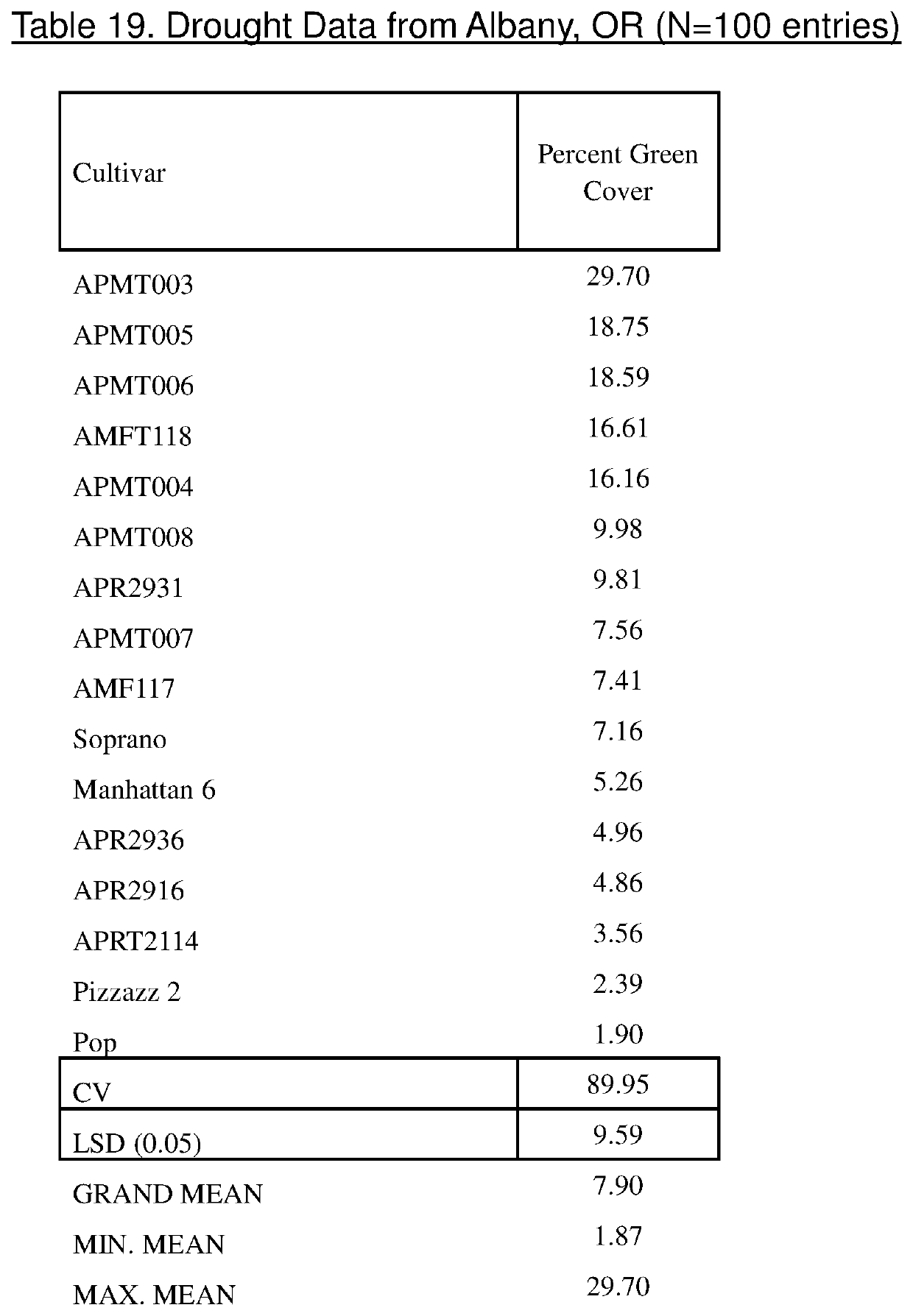Method of over-seeding using American ryegrass, a new turfgrass
a turfgrass and american ryegrass technology, applied in turf growing, agriculture, horticulture, etc., can solve the problems of not being able to transition well, frequent mowing, and not having commercially available i>festulolium /i>available for permanent or overseeding turf use, etc., to achieve better drought tolerance and persistence, good winter color, and more cold toleran
- Summary
- Abstract
- Description
- Claims
- Application Information
AI Technical Summary
Benefits of technology
Problems solved by technology
Method used
Image
Examples
example 2
n with Other Turfgrasses
[0115]American ryegrass is the first Festulolium turf type to be used for turf application. American ryegrass is also the first Festulolium turf type that exhibits a fine leaf texture and dark leaf color. Leaf color is the density of chlorophyll in the leaf blade, resulting in the intensity of color. In the turfgrass industry, dark green color is preferred. The dark green color gives an impression of a more healthy vigorous turf.
[0116]Turf color can be measured quantitatively and qualitatively. Qualitatively, the relative color of the different cultivars can be scored using a 1-9 visual scale, 9 being the darkest green. Digital analysis can also be used to determine color. A digital picture is taken of the turf. The software program Sigma Scan is used to convert the pixel image to a standard color wheel (hue, saturation and brightness). It then generates a number on a 1-9 scale, with 9 being the darkest green.
[0117]Table 6, illustrates the visual comparisons ...
example 3
ng Study
Materials and Methods:
[0119]This study was conducted during the 2015-2016 growing season for cool-season grasses in the transition zone under athletic field / fairway conditions. Forty-six entries of cool-season grasses (ryegrasses) listed in Table 1 were overseeded on a ‘Patriot’ bermudagrass (Cynodon dactylon) grown on Cecil sandy loam (fine kaolinitic, thermic, Typic Kanhapludults) on 15 Oct. 2015. Bermudagrass check plots, which were not overseeded, were included in the study for comparison. The field study was conducted at the North Carolina State University's Lake Wheeler Turfgrass Field Lab.
[0120]The overseeding study was conducted on Patriot bermudagrass that was scalped to 0.5 inch with a reel mower before overseeding. A shaker bottle was used to hand seed all plots accurately and uniformly. Ryegrass (Lolium spp.) entries were seeded at a rate of 12 pounds per 1000 ft2. Light irrigation was applied twice daily for three weeks following seeding. This was then reduced t...
example 4
olerance
Drought Stress Methods:
[0143]1. Establish turf trial[0144]2. Keep soil saturation optimum for turf health[0145]3. Starting in June: Withhold water (no irrigation during the duration of the stress)[0146]4. Mow 3 times per week at 1.5″[0147]5. Digital photos 24 hours after mowing[0148]6. Use Digital Image Analysis to calculate the percent green cover[0149]7. Study continues until top entry is reduced to 25% green cover[0150]8. Analyzed using non-linear regression analysis with data fit to a sigmoid curve.
PUM
 Login to View More
Login to View More Abstract
Description
Claims
Application Information
 Login to View More
Login to View More - R&D
- Intellectual Property
- Life Sciences
- Materials
- Tech Scout
- Unparalleled Data Quality
- Higher Quality Content
- 60% Fewer Hallucinations
Browse by: Latest US Patents, China's latest patents, Technical Efficacy Thesaurus, Application Domain, Technology Topic, Popular Technical Reports.
© 2025 PatSnap. All rights reserved.Legal|Privacy policy|Modern Slavery Act Transparency Statement|Sitemap|About US| Contact US: help@patsnap.com

